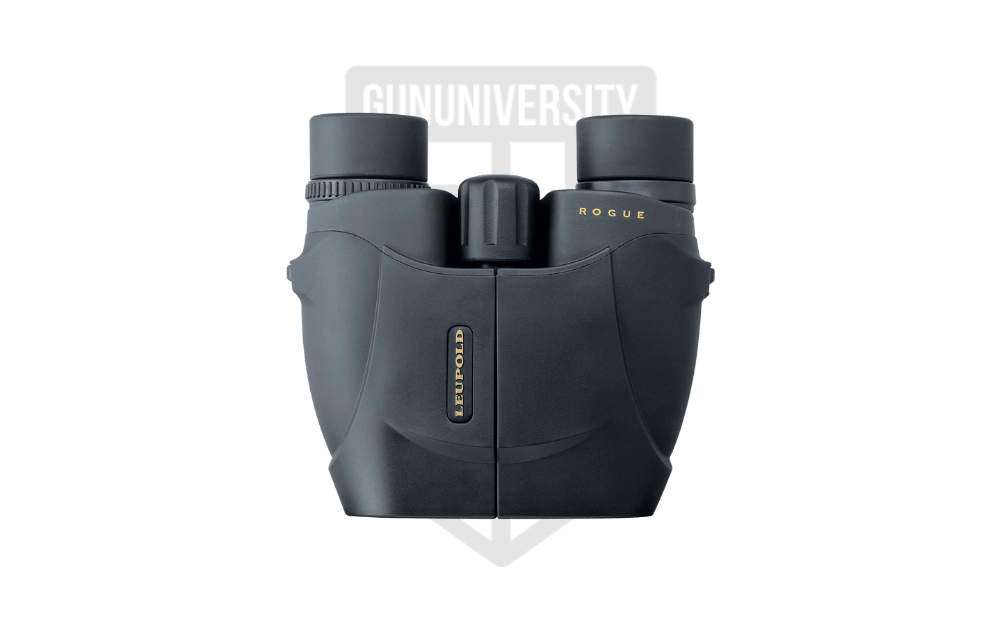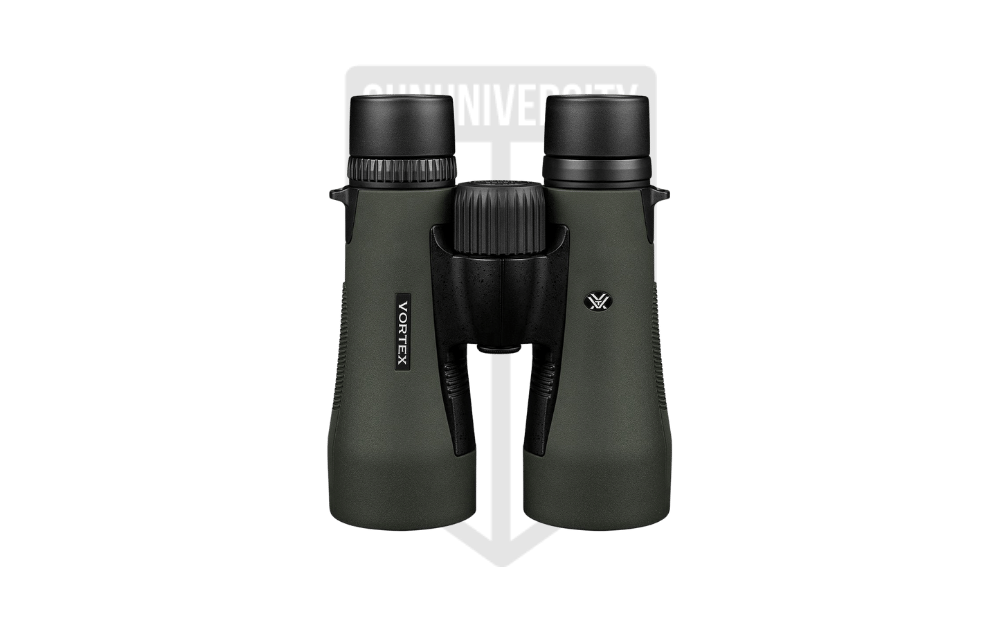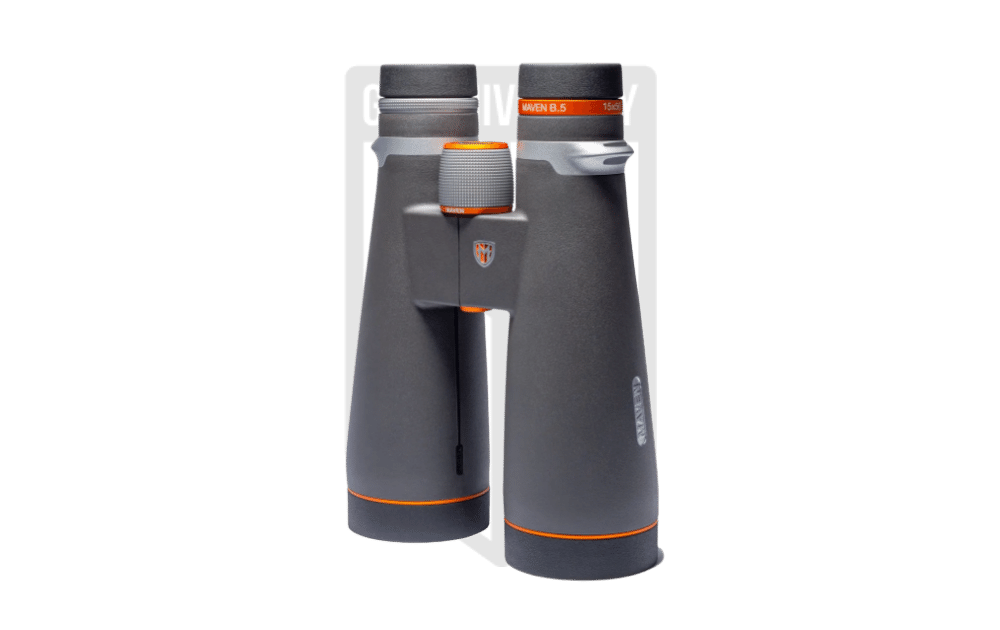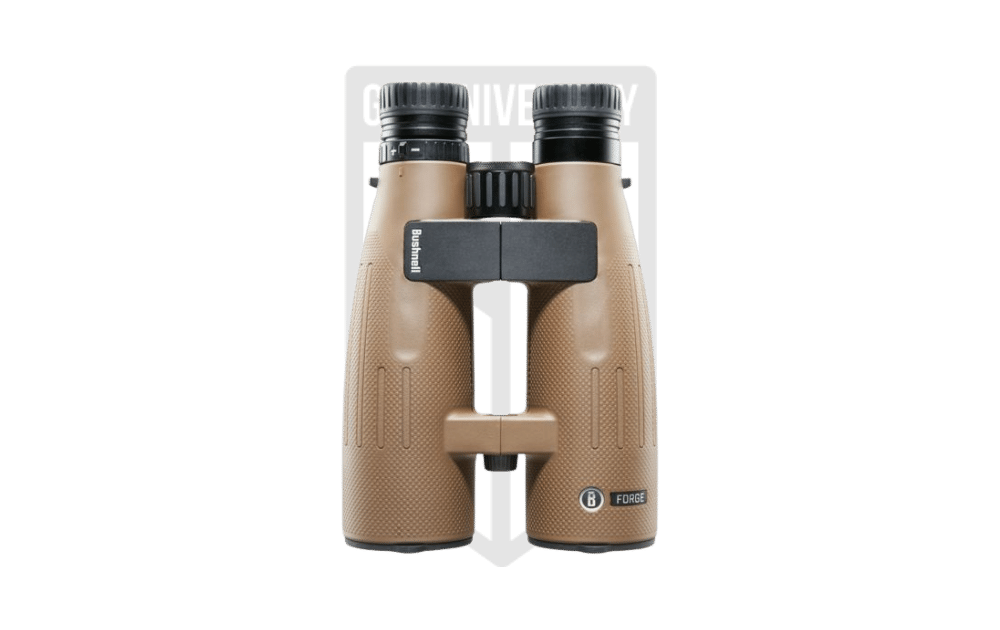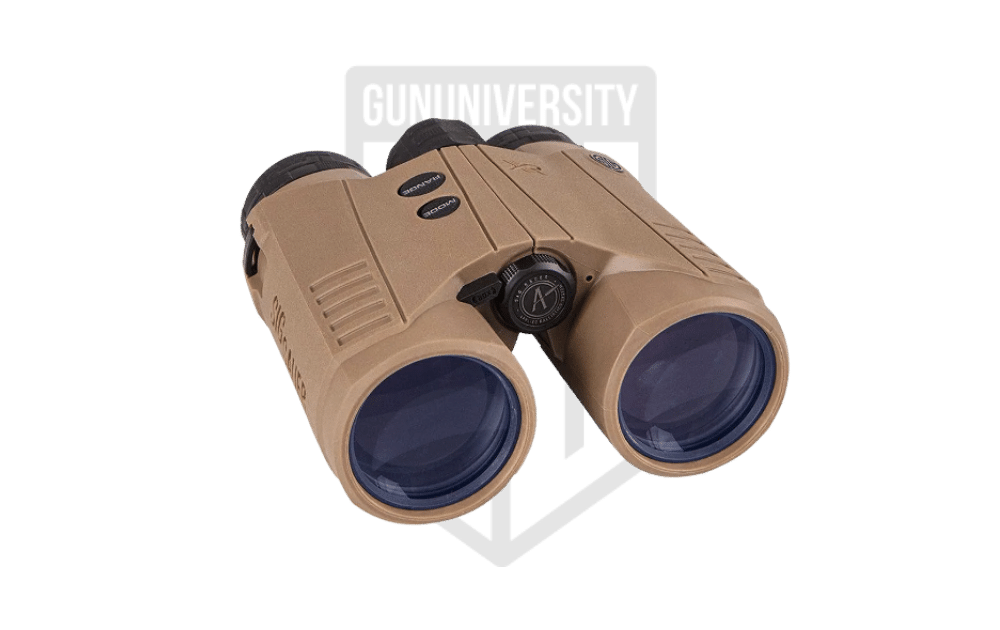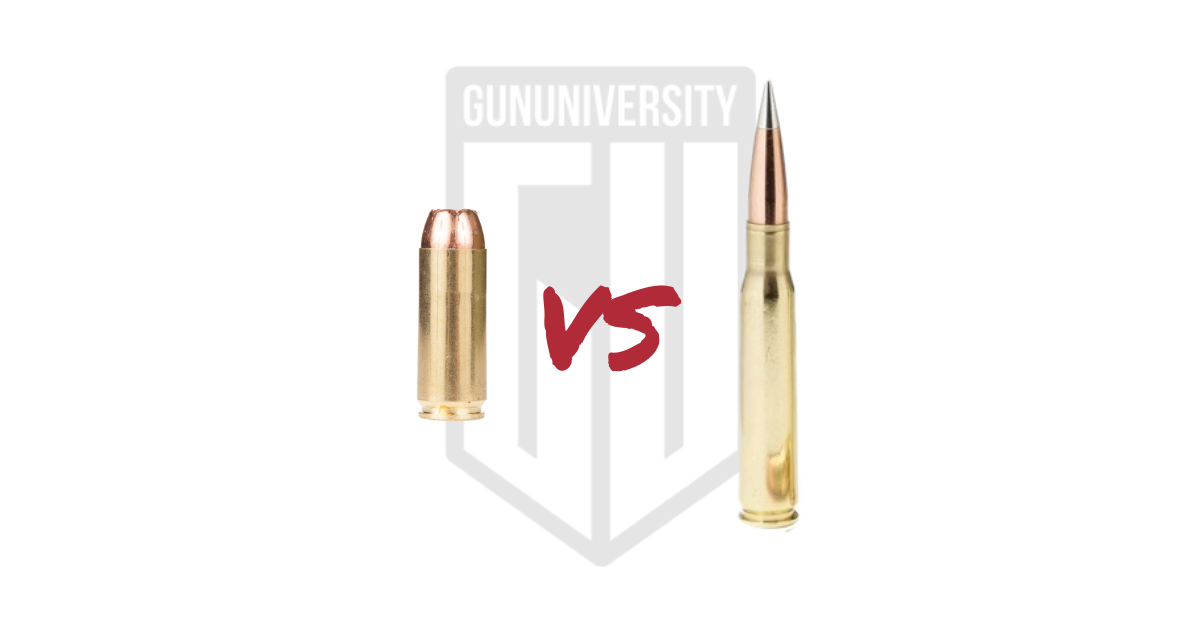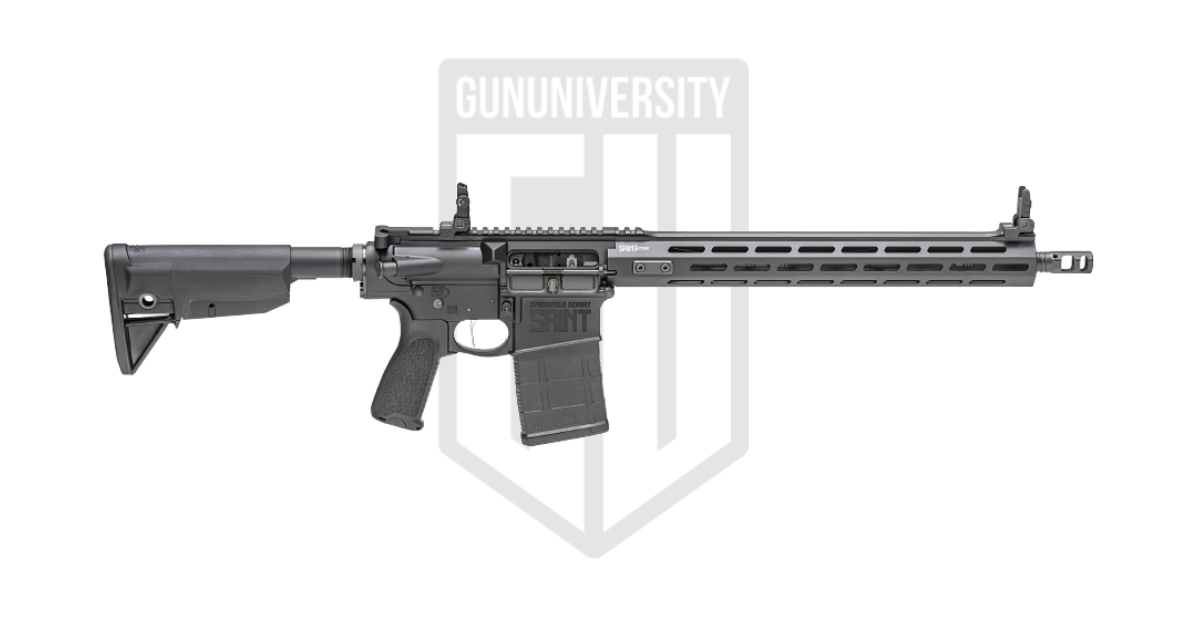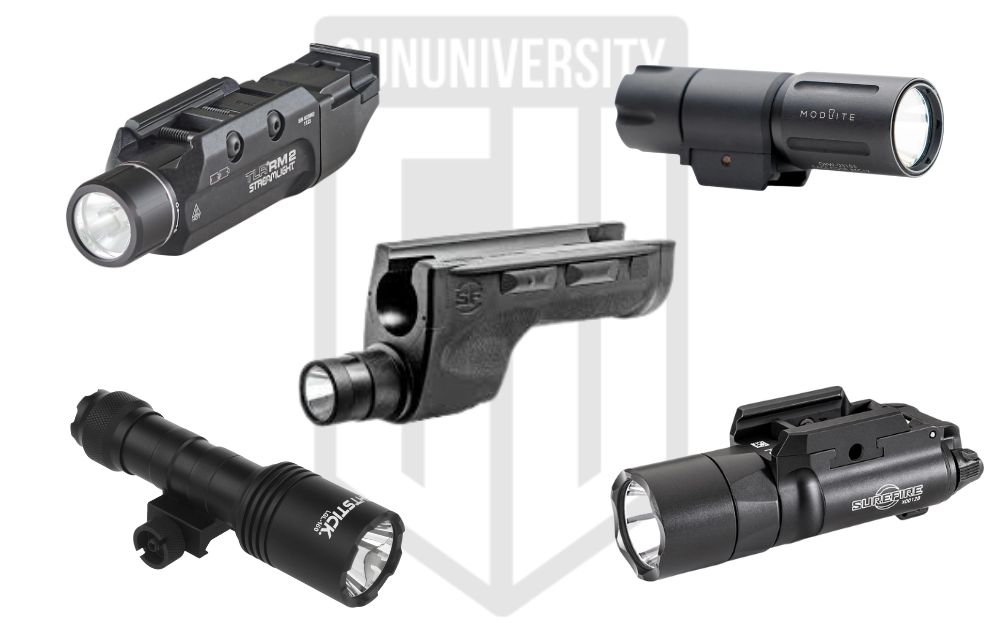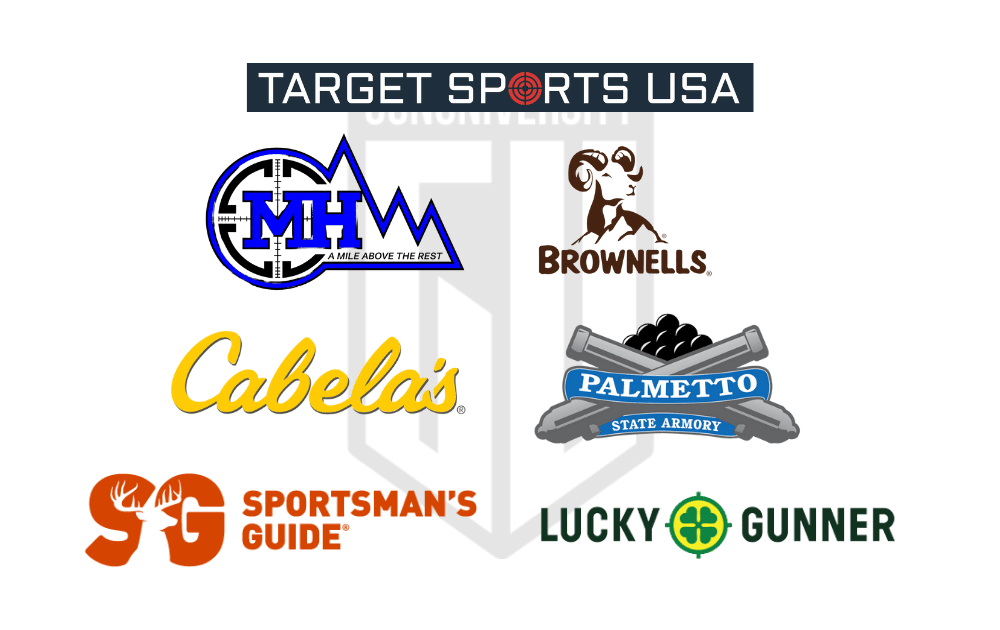7 Best Binoculars For Hunting: Top Glass
A good pair of binoculars can go a long way in easing your hunt. I always have them in my hunting bag because they not only save me miles of walking by scoping out the terrain but also are portable, making sure I can carry them anywhere.
That said, the right binoculars for hunting for you will depend on what you want from it. Do you want better glass quality and magnification or are you looking for something that works better in lowlight?While most of us live and die by the phrase “buy once, cry once” sometimes you just need something cheap that will get the job done.
So I’ve put together a list of the best binoculars for hunting to help you find the right fit. Let’s get right into it.
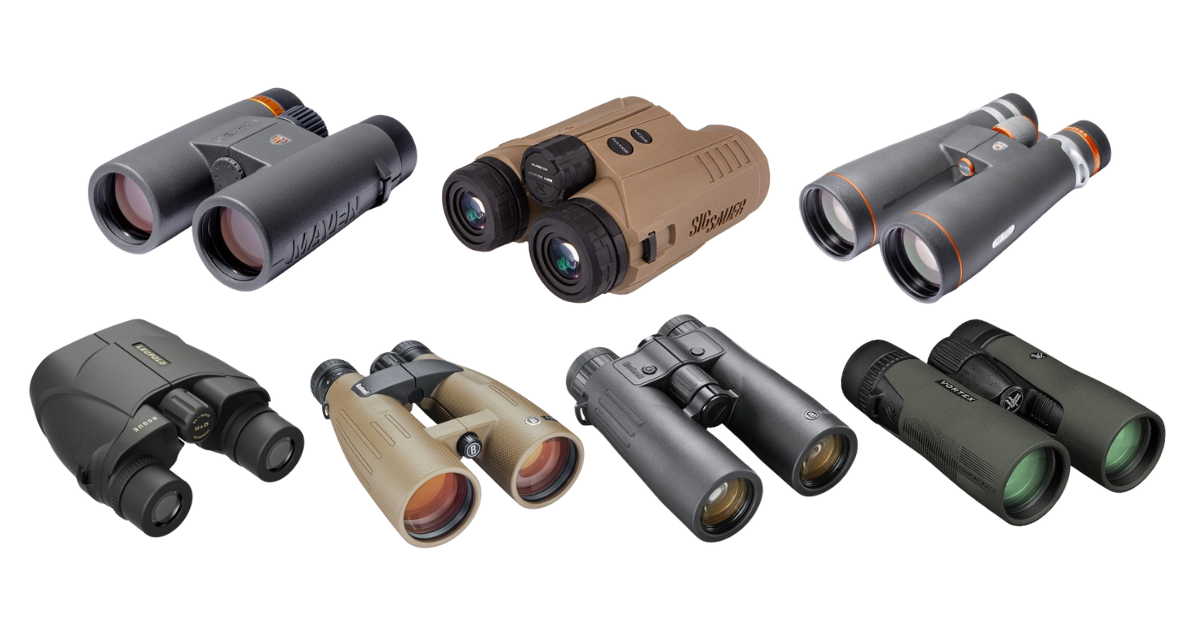
How I Chose the Best Binoculars for Hunting
With over a decade of hunting under my belt, I’ve tested a variety of binoculars to find the best ones. Testing new binoculars is fun, but for me, the most important thing is having quality glass. So, I considered some good hunting binoculars that worked well for me and asked my hunting buddies for suggestions on binoculars with clear glass to try out. After assessing factors like glass clarity, durability, features, ergonomics, and overall value, I made a list of binoculars that offer exceptional optical performance.
Drawing from my experience and what my hunting pals have said, I’m pretty sure these binoculars will make your hunting trips better. But remember, everyone has different tastes when it comes to binoculars. What works for me might not work for you. I’ve ranked these based on what I’ve experienced, and while some took a bit of time to get used to, you get to decide what’s best for you in the end. Here are my picks for the best binoculars for hunting
Best Hunting Binoculars
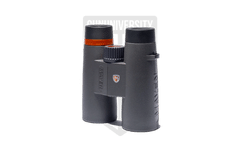 |
| Buy on Amazon | |
 |
| Buy on Amazon | |
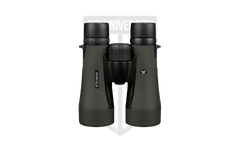 |
| Buy on Amazon | |
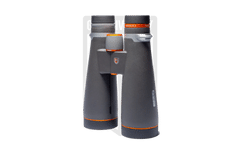 |
| Buy on Amazon | |
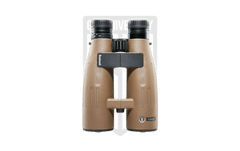 |
| Buy on Amazon | |
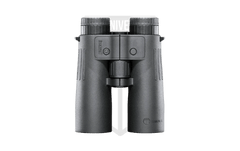 |
| Buy on Amazon | |
 |
| Buy on Amazon |
Spec Comparison of the Best Hunting Binoculars
| Bino | Magnification | Objective Lens Diameter (mm) | Exit Pupil (mm) | Twilight Factor | Prism Type | Close Focus (ft) |
|---|---|---|---|---|---|---|
| Maven C.1 10x42mm | 10x | 42 | 5.25 | 20.5 | Schmidt-Pechan | 5.9 |
| Leupold BX-1 Rogue | 10x | 25 | 2.4 | 15.8 | Porro BaK-4 | 14 |
| Vortex Diamondback HD 10x50 | 10x | 50 | 5 | 22.4 | Porro | 6 |
| Maven B.5 10x56mm | 10x | 56 | 5.6 | 23.7 | Abbe-Koenig | 9.8 |
| Bushnell Forge 15x56mm | 15x | 56 | 3.7 | 29.0 | Abbe-Koenig | 12 |
| Bushnell Fusion X 10x42mm | 10x | 42 | 4 | 20.5 | Roof BaK-7 | 21 |
| Sig Sauer Kilo 10K-ABS | 10x | 42 | 4.2 | 20.5 |
Best Hunting Binoculars
- Maven C.1 10x42mm
- Leupold BX-1 Rogue 10x25mm
- Vortex Diamondback HD 10×50
- Maven B.5 10x56mm
- Bushnell Forge 15x56mm
- Bushnell Fusion X 10x42mm
- Sig Sauer Kilo 10k-ABS 10x42mm
Best Hunting Binocular Reviews
Now that you’ve had a quick overview of our list, let’s go through the review of each binoculars. In this section, I’ll take you through the specifications, its pros and cons and exactly I thought of it.
1. Maven C.1 10x42mm
Maven C.1 10x42mm
Compact, durable, and with some of the best glass within it’s price point — Maven C.1 delivers a great set of binos that are perfect for taking with you on a long stalk.
- Durability A
- Glass Clarity A
- Features A+
- Ergonomics A+
- Value A+
Our Grade
A+
Reader’s Grade
A+
Based on 1 Reviews
Your Grade
Do You Own This Optics? Leave A Review
Success Your Grade Has Been
Added To Our Reader’s Score
We use email to verify the accuracy of our reviews. We promise to never spam you.
Maven C.1 10x42mm Specs
- Magnification/Obj. Lens 10x42mm
- Exit Pupil 5.25mm
- Twilight Factor 20.5
- Prism Type Schmidt-Pechan
- Close Focus 5.9 Feet
The Maven C.1 10x42mm is one of the best compact binoculars I’ve come across for hunting. These binos are small yet powerful, perfect for all my hunting adventures due to its portability. The edge-to-edge clarity was unmatched, and the colors were vibrant. Despite the 42mm objective lens, they outshine most 50mm binoculars in brightness and contrast which is ideal for turkey hunting in bright sunlight. These binos also delivered consistently in low light conditions.
The Maven C.1 10x42mm is really durable with their polymer housing, which is great for me because I’m always out in rough terrain. What’s even better is the extra low-dispersion ED glass and fully multi-coated lenses it comes with at this price point.
Something that I’ve always liked about Maven is how they pay attention to the small stuff, like including a high-quality neck strap. It might not seem like much, but it makes using the binoculars much more comfortable and convenient, especially for long hunts.
Ranked 1st as the best hunting binocular, the durability and outstanding glass quality on this bino punch well above their price, making them the best value in my book. If you want versatile binoculars that won’t break the bank, go for the Maven C.1 10x42mm.
Maven C.1 10x42mm Pros and Cons
- Best in class glass
- Compact but sturdy
- Very bright
- Often back-ordered
2. Leupold BX-1 Rogue 10x25mm
Leupold BX-1 Rogue 10x25mm
When it’s drip or drown even in the woods, looks count for something. Small, lightweight, easy to use, and looks cool. What’s not to love.
- Durability A
- Glass Clarity B+
- Features B
- Ergonomics B
- Value A-
Our Grade
B+
Reader’s Grade
B
Based on 1 Reviews
Your Grade
Do You Own This Optics? Leave A Review
Success Your Grade Has Been
Added To Our Reader’s Score
We use email to verify the accuracy of our reviews. We promise to never spam you.
Leupold BX-1 Rogue Specs
- Magnification/Obj. Lens 10x25mm
- Exit Pupil 2.4mm
- Twilight Factor 15.8
- Weight 12 oz
- Prism Type Porro BaK-4
- Minimum Focus 14 Feet
Leupold BX-1 Rogue 10x25mm Review
Using the Leupold BX-1 Rogue 10x25mm binoculars, I found its compact and lightweight design truly impressive. While they’re not my top pick for long glassing sessions because of their smaller lens size, they work well as a backup or for quick scouting trips. What makes them stand out is their affordability.
As I said, this bino may not provide the best glassing experience and could lead to eye strain over time. However, it covers the basics well and is a good starting point for hunters. While the 25mm lens on this bino limits the low-light performance, the superior prism and glass quality at a reasonable price makes up for it.
I’d say this bino is a good pick for a beginner who enjoys the western hunting style. Overall, the Leupold BX-1 Rogue 10x25mm earns its place as the 2nd best hunting binocular due to its balance of affordability and functionality.
Leupold BX-1 Rogue Pros and Cons
- Price/value ratio is awesome
- Budget-friendly
- What you need and nothing more
- Not as bright as it could be
3. Vortex Diamondback HD 10×50
Vortex Diamondback HD 10×50
Armored with the best warranty in the business, Vortex is often the go-to choice for anyone prone to dropping their kit. The Diamondback is a great choice not only for that but for the high value you get out of it also.
- Durability A
- Glass Clarity B+
- Features B+
- Ergonomics A
- Value A
Our Grade
A-
Reader’s Grade
A+
Based on 1 Reviews
Your Grade
Do You Own This Optics? Leave A Review
Success Your Grade Has Been
Added To Our Reader’s Score
We use email to verify the accuracy of our reviews. We promise to never spam you.
Vortex Diamondback Specs
- Magnification/Obj. Lens 10x50mm
- Exit Pupil 5mm
- Twilight Factor 22.4
- Weight 30 oz
- Prism Type Porro
- Minimum Focus 6 Feet
I tried the Vortex Diamondback HD 10×50 binoculars recently, and I really liked it. It strikes a great balance between what you pay and what you get. Plus, the Vortex warranty is always there for you.
The 50mm objective lenses on this bino captures plenty of light and offers bright views. This makes it ideal for birdwatching, especially with its 6-foot minimum focus for detailed close-up observation.
Though they’re a bit heavy for their size, the design ensures a comfortable grip, and the neck strap adds convenience. The Diamondback HD 10×50 may not be fancy, but its reliability in diverse hunting conditions earns the title of the 3rd best hunting binocular. You can read my full review here.
If you come across a sale or consider buying a refurbished pair (Vortex backs them with a solid warranty), go for it because these binoculars offer excellent value and are a worthy addition to your hunting gear.
Vortex Diamondback HD Pros and Cons
- Best warranty on the market
- Very bright for its specs
- Not going to break your wallet
- Kind of heavy
4. Maven B.5 10x56mm
Maven B.5 10x56mm
56mm objective lens, Japanese glass, and a rock-solid housing — the B.5 from Maven is a long-range shooter’s dream set of binos that don’t skimp in any way while still being way more affordable than many other brands.
- Durability A
- Glass Clarity A+
- Features A+
- Ergonomics A+
- Value A+
Our Grade
A+
Reader’s Grade
A+
Based on 1 Reviews
Your Grade
Do You Own This Optics? Leave A Review
Success Your Grade Has Been
Added To Our Reader’s Score
We use email to verify the accuracy of our reviews. We promise to never spam you.
Maven B.5 10x56mm Specs
- Magnification/Obj. Lens 10x56mm
- Exit Pupil 5.6mm
- Twilight Factor 23.7
- Weight 45 oz
- Prism Type Abbe-Koenig
- Minimum Focus 9.8 Feet
Maven B.5 10x56mm Review
I’ve been using my Maven B.5 10x56mm binoculars for almost two years now for NRL22 competitions and NRL22X matches where ranges can reach up to 300-400 yards. Spotting .22 LR hits on steel targets at such distances is not easy, but this bino delivered consistently.
The glass quality is exceptional, offering vivid colors and remarkable brightness, which makes spotting targets simple. They’re comfortable to use, even during long spotting sessions. The minimal eye strain I experienced is comparable to a friend’s $3,500 Swarovski binoculars, but at half the price, the Maven B.5s are remarkable.
While I haven’t extensively used this bino for wildlife spotting, it made field observation effortless on the few occasions I’ve taken them out. The Maven B.5, with its glass quality and affordability, rightfully secures its place as the 4th choice in my list of best hunting binoculars. Read my full review here.
Maven B.5 10x56mm Pros and Cons
- Amazing Japanese glass
- Top tier prism
- Super bright
- thicc like oatmeal – is heavy
5. Bushnell Forge 15x56mm
Bushnell Forge 15x56mm
When you’re working at long distances like across mountain passes or canyons, sometimes you just need a little extra power in your pocket. The Bushnell Forge is an outstanding choice for anyone looking to reach out.
- Durability A+
- Glass Clarity A+
- Features A
- Ergonomics A
- Value A+
Our Grade
A+
Reader’s Grade
B
Based on 1 Reviews
Your Grade
Do You Own This Optics? Leave A Review
Success Your Grade Has Been
Added To Our Reader’s Score
We use email to verify the accuracy of our reviews. We promise to never spam you.
Bushnell Forge 15x56mm Specs
- Magnification/Obj. Lens 15x56mm
- Exit Pupil 3.7mm
- Twilight Factor 29.0
- Weight 51 oz
- Prism Type Abbe-Koenig
- Minimum Focus 12 Feet
Bushnell Forge 15x56mm Review
When hunting in the Western landscapes, having reliable optics is key. That’s why I ranked the Bushnell Forge 15x56mm binoculars as the 5th best hunting binoculars on my list.
This bino has a 15x56mm setup that gave me the magnification I needed to spot game at a distance with clarity. The objective lens size of this bino lets in lots of light, which helped me get clear views even in low light conditions. Also, the colors on this scope are spot-on.
Whether I’m tracking for whitetail hunting at 800+ yards or checking hits on steel targets at 1,000 yards, the clarity is impressive. These binos are also surprisingly affordable for the premium performance they offer.
The Bushnell Forge 15x56mm binoculars is my choice for spotting and tracking game. They offer top-notch optics without a heavy price tag. If you’re looking for a great pair of binos, Bushnell’s Forge line is incredible.
Bushnell Forge 15x56mm Pros and Cons
- Lots of magnification and light collection
- Top-tier glass is super clear
- Near perfect colors
- Heavy
- Hard to use without a tripod or other support
6. Bushnell Fusion X 10x42mm
Bushnell Fusion X 10x42mm
Every hunter should have a laser rangefinder on a hunt, make your day easier by combining your LRF and your binos! This can get expensive fast, but the Fusion from Bushnell keeps the price reasonable.
- Durability A
- Glass Clarity B+
- Features A
- Ergonomics A
- Value A
Our Grade
A
Reader’s Grade
A
Based on 3 Reviews
Your Grade
Do You Own This Optics? Leave A Review
Success Your Grade Has Been
Added To Our Reader’s Score
We use email to verify the accuracy of our reviews. We promise to never spam you.
Bushnell Fusion X Specs
- Magnification/Obj. Lens 10x42mm
- Exit Pupil 4mm
- Twilight Factor 20.5
- Weight 35 oz
- Prism Type Roof BaK-7
- Minimum Focus 21 Feet
Bushnell Fusion X 10x42mm Review
The Bushnell Fusion X 10x42mm is a neat combo of binoculars and a laser rangefinder (LRF). Usually, these combos either cost a lot or end up giving you subpar gear, but the Fusion X breaks that trend.
Now, they’re not the most amazing set of binos or LRF either, but they get the job done. They’re solidly built with an IPX7 rating, and their lenses provide clear views, but not the brightest. Now, that’s good news for glasses wearers like me.
The LRF provides accurate readings, claiming approximately 600 yards for animals, extends to about 900 yards for trees, and reaches distances of approximately 1200-1400 yards for reflective targets.
These numbers beat out many standalone LRFs. So, if you’re looking for a combo that won’t empty your wallet, I’d say go for the Fusion X. It strikes a nice balance between features and cost, a good addition to any hunter’s gear. Read my full review here.
Bushnell Fusion X Pros and Cons
- Two critical tools in one
- No more guesswork in the field
- Good light collection
- Not the best glass
7. Sig Sauer Kilo 10k-ABS 10x42mm
Sig Sauer Kilo 10k-ABS 10x42mm
When money is no object and you want the best of the best, Sig Sauer Kilo 10k-ABS is a powerful tool. A super-advanced laser rangefinder and binocular combo, will not only range a target but also give you a complete ballistic solution. You just point and shoot.
- Durability A+
- Glass Clarity A+
- Features A+
- Ergonomics A
- Value B-
Our Grade
A
Reader’s Grade
A+
Based on 1 Reviews
Your Grade
Do You Own This Optics? Leave A Review
Success Your Grade Has Been
Added To Our Reader’s Score
We use email to verify the accuracy of our reviews. We promise to never spam you.
Sig Sauer Kilo Specs
- Magnification/Obj. Lens 10x42mm
- Exit Pupil 4.2mm
- Twilight Factor 20.5
- Weight 32 oz
Sig Sauer Kilo 10k-ABS 10x42mm Review
As someone who values quality hunting gear, the Sig Sauer Kilo 10k-ABS 10x42mm caught my attention. Even though it’s costly, these binoculars are something else when it comes to innovation and practicality.
The Kilo 10k combines binoculars and a laser rangefinder (LRF). The 42mm objective lens diameter makes sure they grab lots of light, so you see things really well, even when it’s not super bright outside.
What really stands out is the advanced tech on this bino. The LRF uses a high-tech display that makes targeting and ranging easy. Plus, the ABS software gives you all the environmental and ballistic info you need for precise shooting.
A game-changer on this bino is the integration with the Basemap app, making navigation and waypoint marking easy. Despite its impressive features, I ranked the Kilo 10 as the 7th best hunting binocular, mainly due to its massive price tag which might not fit the budget of all the hunters.
However, if you’re a serious hunter who wants the best tech and doesn’t mind the investment, then Sig Sauer Kilo 10k-ABS 10x42mm is what you’re looking for. Read my full review here.
Sig Sauer Kilo 10k-ABS Pros and Cons
- Amazing glass
- Unbeatable ballistic software
- Outstanding display
- More computing power than the moon landing
- Very expensive
- Wish it was 50mm
Buyer’s Guide For The Best Hunting Binoculars
Binoculars for hunting typically serve two main purposes: scouting animals and scouting routes.
Depending on your hunting location and target, you might need a good pair or none at all. Living and hunting in the western USA, binoculars are a must for me.
If you’re using binos to find game you’ll want the best you can afford. Clear glass is key for spotting animals that are trying to stay hidden. Once you do see them, you’ll need to get a good enough look at them to make sure they’re legal.
However, scouting routes often don’t require high-end binoculars. If you already own a good pair, there’s no need for another. Still, having a cheaper pair can be handy, especially if you’re using a spotting scope or hunting in areas where magnification isn’t needed.
Important Parts & Names
Magnification and Objective Lens are the two big numbers that every pair of binos lists. “10×50” or “8×42” means the binos will magnify what you see by 10x or 8x.
The second number, 50 and 42 in our case, is the size of the objective lens in millimeters.
More is better, but bigger adds weight and cost as well.
Glass Coatings – are crucial for optics nowadays. They can increase the performance of inexpensive glass or compromise the quality of excellent glass.
However, understanding the best coatings and their functions is tricky. Most coatings are proprietary secrets, and manufacturers don’t disclose them.
In general, more coatings mean better quality. “Multi-coated” is a common term you’ll encounter, implying various coatings for anti-reflection, scratch resistance, water repellency, and UV protection.
Additional coatings may include anti-blue light, chromatic aberration reduction, anti-fogging, and more.
Glass Quality – is what determines the cost and performance of optics. It has three main aspects: brightness, color, and coatings.
Coatings we just covered, brightness is how much light gets transferred through the optic, and the color is normally how “true” the colors are to real life.
Lower grades of glass or weird coatings can affect the colors you see. This becomes important when spotting dark-colored animals against a dark forest backdrop.
Exit Pupil – is the diameter of the light that comes out of the back lens, and it’s what you actually see.
Basically, bigger is usually better.
Human pupils are typically 2-4mm during the day and can grow to 4-8mm in low light. This is useful to know because if you’re hunting only during the day, having the largest exit pupil isn’t important.
But since many of us hunt in early or late light, a larger exit pupil is a nice to have.
Twilight Factor – is a bit outdated, but people still ask about it, so here it is.
In the past, it was a way to measure how well an optic performs in low light. You multiply the magnification by the objective lens size, then find the square root of that number. That result is the “twilight factor.”
However, this number is often inaccurate nowadays. Better glass and coatings don’t always translate to good performance in low light, even with a high twilight factor. On the flip side, a lower twilight factor can still perform well with great coatings.
Personally, I don’t pay much attention to this number.
Roof Vs. Porro Prism – is more about understanding how binoculars work than making a choice. Knowing the prism type helps set expectations when buying blind.
Prisms are pieces of glass that the light travels through after passing through the objective lens and before being focused on the exit pupil.
Light moving through the prisms is how we get the light to do what we need it to do, this includes magnification and reorientation.
Porro prism binoculars are easy to recognize because there will be a large step in their housing. They are also the oldest and cheapest style of prisms.
While often found in lower-grade binoculars, they can offer a better 3D image and wider field of view.
Roof prisms are sleeker but trickier to make. Unlike porro prism, they don’t need the zig-zag shape, so roof prism binoculars can be compact, and lighter. Roof prisms can also give a brighter image and a higher magnification.
When considering high-end optics, there are a some terms worth knowing: BaK-4, Abbe-Koenig and Schmidt-Pechan.
BaK-4 – is a higher grade glass commonly used in premium optics, indicating superior quality.
Abbe-Koenig and Schmidt-Pechan – are two types of roof prisms. Schmidt-Pechan is more affordable and widespread, while Abbe-Koenig is rarer and pricier. Only six brands worldwide produce Abbe-Koenig prisms, including Swarovski, Docter/Noblex, Zeiss, Sig Sauer, Optolyth, and Leupold.
Abbe-Koenig prisms are better than Schmidt-Pechan and provide better light transmission, you often see them paired with a larger objective lens to take advantage of that.
Minimum Focus – is how close you can focus. For example, 13 feet means the closest object you can bring into focus is 13 feet away.
For shooting, this number isn’t important since no one is using binos to spot hits at 10 feet.
But if you want to use these for some bird watching or something, this number might matter to you.
What Matters To You
What kind of binoculars you need depends on what kind of hunting you do.
If you’re in close quarters, like the woods with a range of 50-100 yards, you may not need binoculars, but having an inexpensive pair as backup is useful.
Most hunters, however, benefit from binoculars for spotting game within 100-1,000 yards and scouting locations. Consider the distance you’ll be using them. For shorter distances up to 300 yards, a mid-tier set works well, while longer distances require higher-tier sets with better glass quality.
Consider how long you’ll use them each day. Expensive, well-made binoculars reduce eye strain during extended use.
Also, consider when you’ll use them. For mid-day use, a smaller objective lens is fine, but for mornings or late afternoons, opt for a larger objective lens for better light gathering.
What Magnification To Choose
This is an important topic, you can tell because I put it in its own section.
Most binoculars on this list come in 8x or 10x magnification, with some also offering 12x or 15x.
I’ve listed the 10x versions for most and the 15x version for my Long Range pick. Personally, I recommend 10x most of the time. However, this is a hotly debated topic.
Depending on who you ask and what you read 8x and 10x are the most common recommendations. There are people that will die on both hills, but I’m not one of them.
The benefits of 8x binoculars are they are sometimes a little cheaper (not often though), they offer higher brightness with the same objective lens, and a larger field of view.
8x binoculars are generally lighter, easier to handle, and particularly more user-friendly when held without support. The downside is they are 2 powers less magnification.
Those are all powerful arguments in their favor.
I still like 10x better.
Looking at the Maven C.1 binoculars since Maven publishes good data on their binoculars so it’s an easy comparison to make, the 10x version is 0.5 ounces heavier, has a 27-foot smaller field of view at 100 yards, and 1% less light transmission.
However, these differences are minor to me, and I prefer the extra 2x magnification.
Looking at the Maven C.1 binoculars since Maven publishes really good data on their binoculars so it’s an easy comparison to make, the 10x version is 0.5 ounces heavier, has a 27-foot smaller (314 feet total) field of view at 100 yards, and 1% less light transmission.
All of that said — I don’t think you’ll go wrong with either option. This is a personal choice and you should get what you like to use most.
You Get What You Pay For
As much as it pains us to pay it, better things cost more — normally.
You can find some amazing value binoculars out there that punch way above their price point, but if you want the best you’ll have to pay for it.
With optics, glass is expensive. Coatings aren’t cheap either.
While a $10 or even $100 difference might not guarantee a better product, when you’re looking at several hundred or more, you’re likely getting something worthwhile.
For hunting, I suggest investing at least a few hundred dollars ($250-$400) in a good pair of binoculars. Anything less won’t provide the quality glass needed to spot, identify, and track animals at long distances.
If you want some really kickass binoculars expect to spend anywhere from $800 to well over $2,000.
Recent Posts
November 1, 2025
November 1, 2025
October 31, 2025
October 29, 2025


